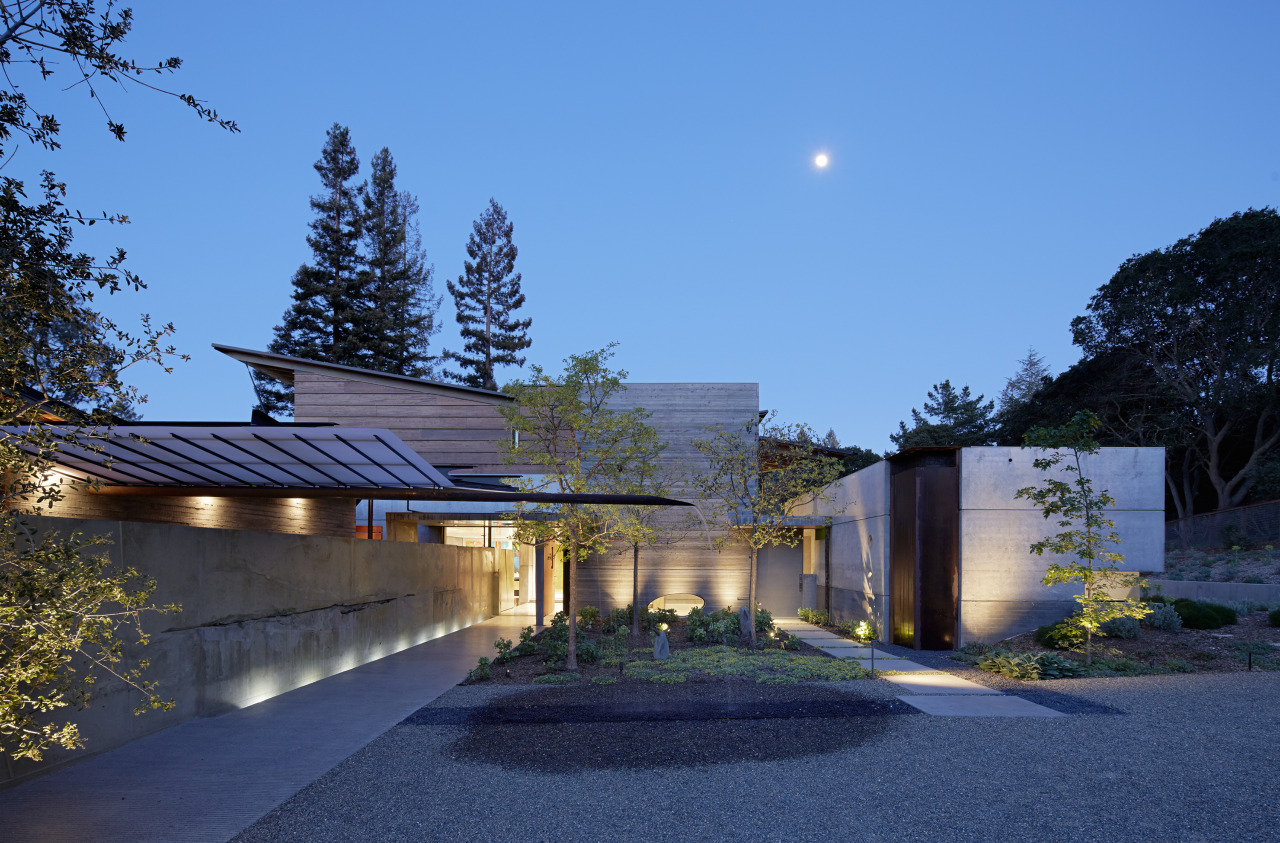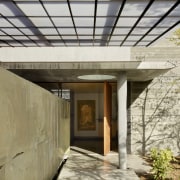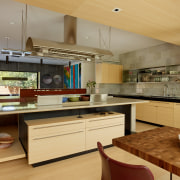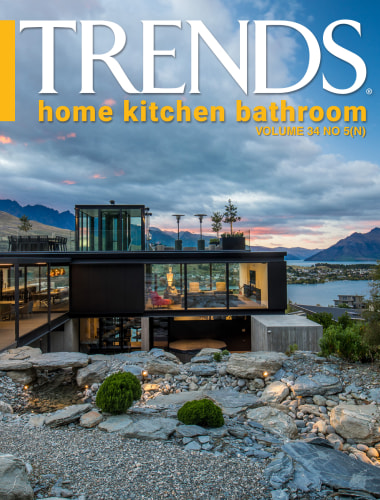Concrete is so much more than just a construction material in this new home
... it also provides a range of textured surfaces, a heat sink for passive heating, and ever-evolving artworks
While many of us might view concrete as just another construction material, for designer FuTung Cheng it’s so much more.
“Of course it can function entirely as a structural material, but for me it’s also a means of expression,” he says.
“It imitates anything you press against it – rough or smooth. I use it with integral colour and texture, so it becomes a lot more expressive than any other material.”
That relish in the versatility of concrete is apparent in his design of the home featured here, a 560m² family home on a 4000m² suburban site. The house itself is a cluster of five distinct structures – the two-storey main house, office, guest house, meditation centre and the garage.
“I didn’t want it to be a single monolithic structure that felt overwhelming or out of scale,” he says.
Cheng’s aesthetic approach to concrete helps mark out the different elements on the front facade, with a double-storey wall of textured, board-formed concrete used on the main house, while the single storey office is in smooth-faced concrete.
The 38cm-thick walls, with vapour barrier insulation, provide another concrete benefit – acting as a heat sink and reducing the need for artificial heating and cooling
For the structural column at the front door, Cheng used a third technique. Concrete was poured on site into a polyester tube, which was then pinched at various points to create a smooth organic shape.

The second storey of the main house is clad in contrasting reclaimed redwood that had been felled over 100 years ago. It’s topped by a butterfly roof concealing the photovoltaic cells covering 60 per cent of its surface.
The roof’s angles, pitches and pleats collect rainwater, allowing for potential water tank storage. But rainwater is also channelled to form water features and to interact with some of the concrete walls to create ever-changing art installations.
So, at the front of the house, a copper pipe extends over the walkway, spilling out a stream of water from the garage roof during rain showers.
Meanwhile, small pumps also direct rainwater into the middle of the wall running alongside the entry approach.
“I cast this concrete so it looks like a natural crevice in the side of a mountain, with spring water weeping out,” Cheng says. “Over time, this has developed into a green wall with moss and algal growth.”

Water from the butterfly roof creates another art installation at the back of the house. Here it is channelled along a copper beak onto a series of rain chains hanging above a concrete blade wall, which Cheng refers to as an ‘erosion’ wall.
“I’ve deliberately encouraged moss and algae to grow here too, but we also embedded various items from us and the owners into the concrete, and these will be revealed over time as the wall weathers.”
All the concrete work in the house was fabricated and detailed by the designer, often creating hands-on, spontaneous compositions.
“We tried to strike a balance between the disciplined planning of architecture, spur of the moment opportunities in construction and the relentless forces of nature.”
Credit list
Designer
Cladding
Flooring
Heating
Kitchen cabinetry
Splashback
Faucets
Cooktop
Microwave
Bathroom vanity and countertop
Toilet
General Contractor
Wallcoverings
Staircase
Countertops
Kitchen sink and drainboard
Oven, refrigerator, dishwasher
Ventilation
Waste disposal
Bathroom faucets
Story by: Paul Taylor
Photography by: Matthew Millman
Home kitchen bathroom commercial design
Home Trends Vol. 34/5
When you start your next home design project – whether it's a new build or renovation – you'll probably have an idea of ...
Read More













